
Lovebirds roseicollis

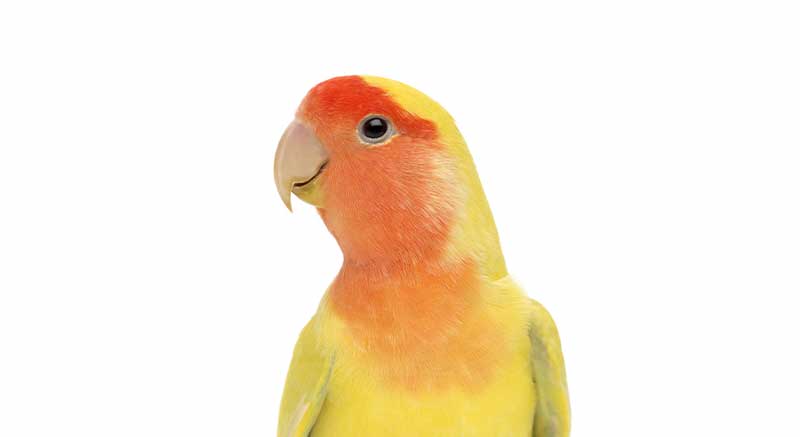
Lovebird Roseicolli
Name Dutch: Lovebirds roseicollis
Scientific name: Lovebirds roseicollis
Origin: Africa
Age: About 10-16 years
Height: 13-17 cm (depending on whether it is a show bird)
Birth: Egg laying (About 3 to 6 eggs per nest). These hatch after about 23 days.
Activity: Day active
Legislation: No CITES. Other legislation: Must be at least 55 days old before they can leave their parents.
Climate: From natural (sub)tropical climate to desert climate.
Stay: A large cage or aviary with a loose java tree or playground.
Minimum size: Minimum dimensions 100x50x50cm. ''The bigger the better''.
Food: (70%) Pellets and/or Nutri-Berries in combination with (30%) seeds, fruit, vegetables and nuts. Always provide stomach grit with a seed mixture.



Description
The Agapornis roseicollis is also called Peachhead agapornis. If we look at the original color of the Peach-headed Agapornis, the name is logically chosen since the wild color of the Agapornis roseicollis has a green body with a peach-coloured head and a red color on the crown. In addition, various types of Agapornis roseicollis have emerged that contain, for example, yellow, olive green or more white. In most species, the typical features of a peach-colored head remain. The Agapornis roseicollis should not be confused with its cousin the Red-faced Agapornis. This Agapornis has less red on the head than the Agapornis roseicollis. The red in this Red-masked Lovebird only extends to the eyes (a mask) and therefore does not contain the entire head.
The Agapornis roseicollis can live for about 10-16 years. Unfortunately, sometimes they don't make it to this age. But sometimes we see outliers that get older. So keep in mind that the Agapornis roseicollis gets quite old.

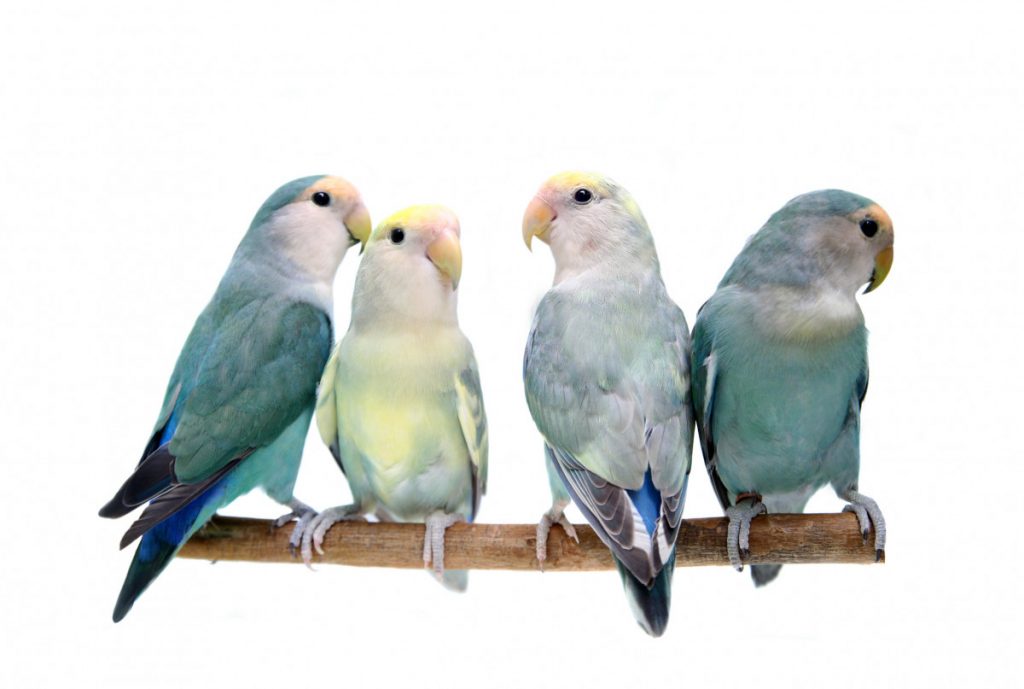
Difference Between Man & Woman
An Agapornis is also called a ''Lovebird''. This is because it is a bird that really loves ''love''. He also doesn't like being alone in a cage. We therefore advise not to keep Agapornis roseicollis alone. They feel best with a buddy of the same kind. A male Agapornis roseicollis can easily be kept with another male Agapornis roseicollis. Two ladies together, on the other hand, often causes misery and we often see that they get into an argument. A bunch of lovebirds is of course also possible. But before you pair them it is important to know whether you have a man or a woman.


Reproduction
Are you planning to start breeding with Agapornis roseicollis? Or do you now have a litter of Agapornis roseicollis? Then it is important to know that breeding of Agapornis roseicollis should only be started after an age of 1 year. It is true that the Agapornis is sexually mature at the age of 8 months, but around that age they are really too young. When the Agapornis roseicollis is old enough and starts laying eggs, we see that a female Agapornis lays 3 to 6 eggs at a time.
When she has incubated on the eggs for about 23 days, the young are born. They are then completely dependent on the parents. But this will soon change. The parents feed the young extensively. They do this for 5 to 6 weeks, after which they will reduce the amount they feed. They do this to ensure that the fry become independent. The young then go in search of food on their own. At the age of 7 to 8 weeks, the young are almost independent. They can then find and eat food on their own. The law ''Decree animal keepers'' that came into effect on 1 July 2014 therefore also stipulates that the Agapornis roseicollis may only leave the parents after 55 days. This way the young have enough time to learn everything from their parents. However, care must be taken that the young do not have to stay with the parents indefinitely. Sometimes it is the case that when the parents are ready for a new litter, they can chase the young (sometimes quite violently) away.
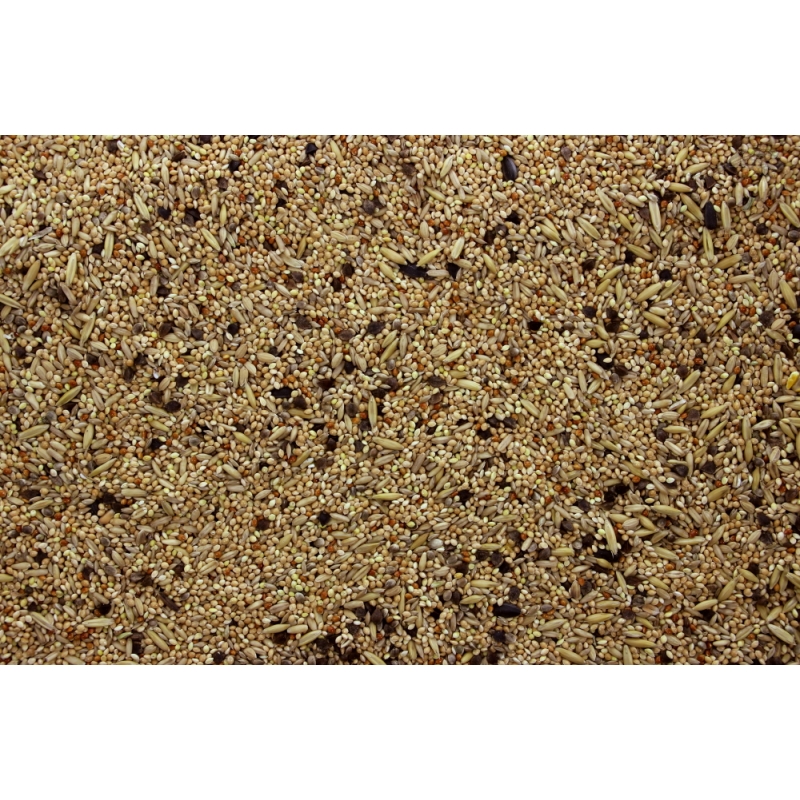
Nutrition
A well-composed menu is of course necessary for a healthy Agapornis Roseicollis. With all the nutrients your bird needs. The ideal combination would be (70%) Pellets and/or Nutri-Berries in combination with (30%) seeds, fruit, vegetables and nuts. Always provide stomach grit with a seed mixture.
Pellet food is ideal because each pellet has the same composition and therefore the bird cannot choose but also receives the same nutrients per pellet. When feeding seeds, make sure that they do not always "pick out" the same seeds, but that they do get enough. You can also choose to feed (live) mealworms as snacks and to supplement the menu with millet sprays.


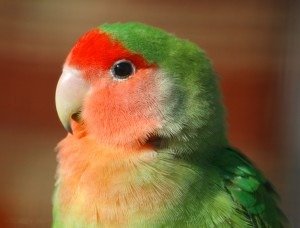
Behaviour
The Agapornis roseicollis is known to be a bit of a noisy bird, especially when it is bored. So always make sure that the Agapornis roseicollis has enough to demolish. You can buy special scrap wood/cork/toys for this. Feeding games (Foraging toys) also help to keep your Agapornis occupied.
An Agapornis roseicollis is a bird that can sometimes be a bit complicated for a starting bird keeper to tame. But patience is (almost) always the solution. See if you can train your bird to walk. The advice is to first look for what you really like Agapornis. You can then use this treat to lure him and get him to leave. Repetition is especially important here, which will ensure that the bird does not become afraid so quickly and will gradually start to trust you more.


Together or alone?
An Agapornis Roseicollis is a social bird, just like all other lovebirds. That means he really needs a buddy to be happy. Another name for a lovebird is lovebird, they give a lot of love and also need a lot of love. They are smart and intelligent birds that you really need to pay a lot of attention to. A buddy makes a difference against loneliness. It is best to keep lovebirds in pairs, this can be a couple or 2 males.
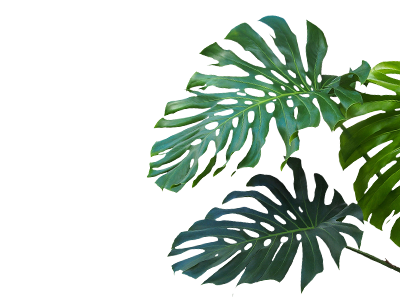
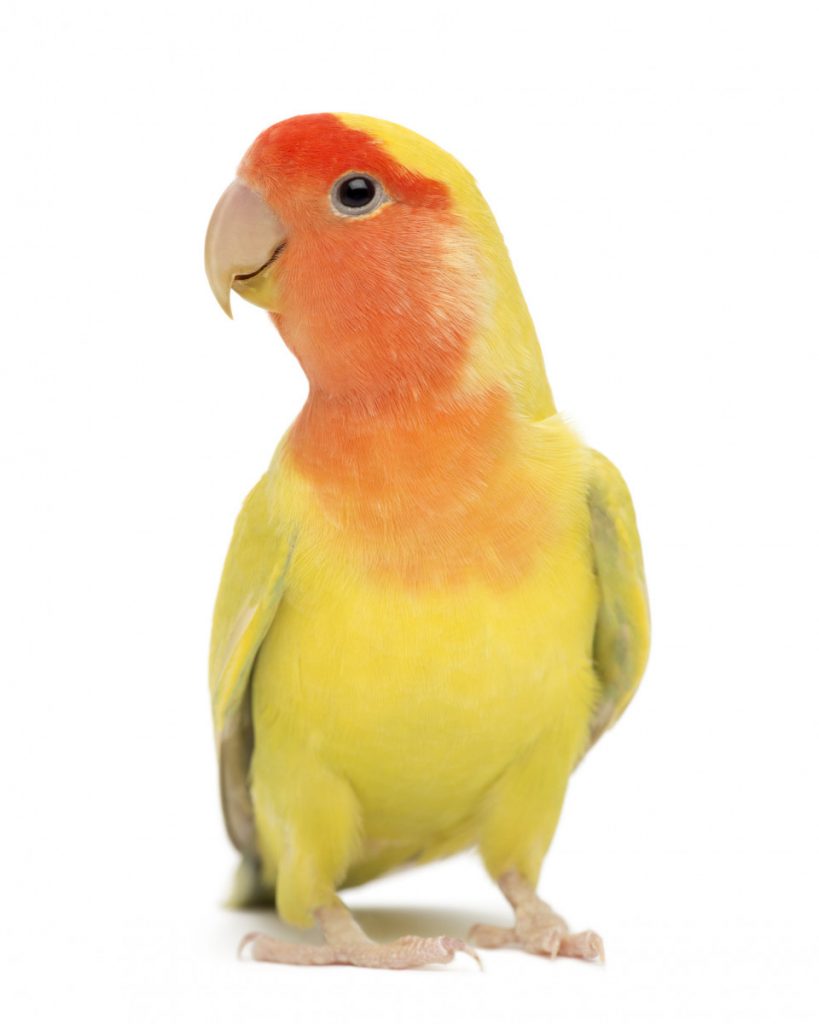
Caresheet
The Agapornis Roseicollis needs a large cage or aviary with a loose java tree or playground, with two they obviously need more space. Because the lovebird can still be a "demolitionist" by nature, it is advisable to offer sufficient challenge in the enclosure. Demolition toys and foraging toys are a must to prevent boredom.
In any case, there must always be perches present in the enclosure of a lovebird. Preferably natural perches with different sizes because these sticks are soft on the legs, they can wear their nails well on this, they have more grip and because of the different sizes also train the legs.
There are many different ground covers available on the market, each type has its advantages and disadvantages. It is also great to furnish the cage naturally with, for example, discovery bedding on the bottom of the cage and then mix it with moss and/or leaves. It makes the ground cover interesting for the lovebird.

